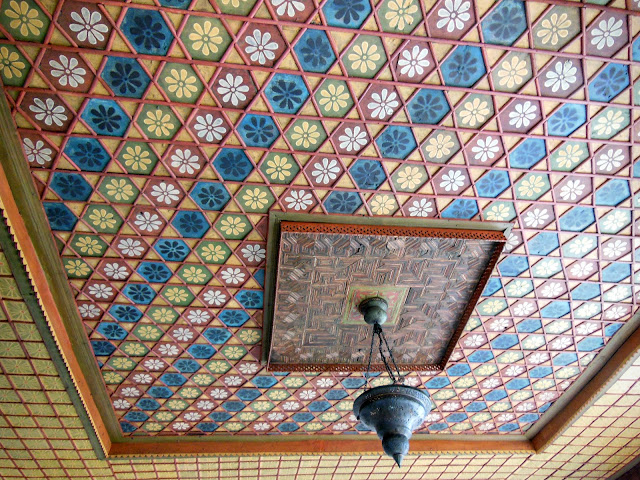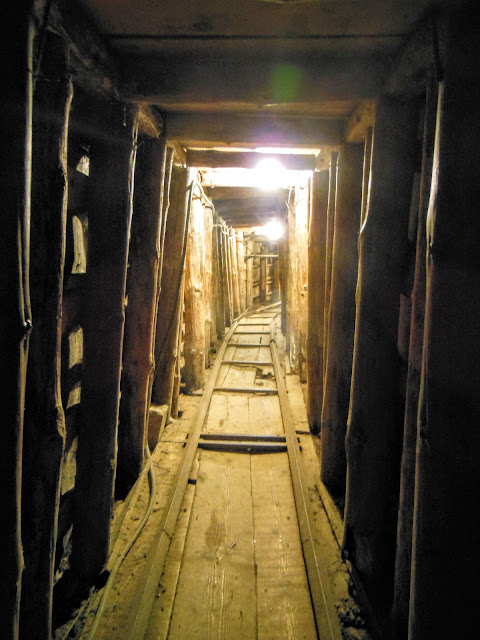Sarajevo was also the site of the assassination of Franz Ferdinand, the Archduke of Austria, and his wife Sophie. The assassination led directly to World War I. It was humbling to stand on the street where an event that had such a tragic impact on history.
So many buildings throughout Sarajevo were absolutely beautiful with intricate details. The buildings below were built during Sarajevo's time under Austro-Hungarian rule.
In the Turkish quarter of Old Sarajevo is the Orthodox Cathedral. Its opening in the late 1800s caused a lot of controversy with some of the locals and it was postponed for a year.
There were signs posted on the door saying that photography is not allowed but when we paid for our tickets the guys told us that we could take photos. We were super excited and took over a hundred photos between the two of us. It was so beautiful! The panel below was built by a Russian craftsmen sent by Tsar Alexander II.
For Thanksgiving dinner we had Ćevapi and kefir. A friend of mine from Nebraska recommended we try his favorite place in Sarajevo, Zeljo. The yogurt drink was a little rough (it was described to me as a thin yogurt/sour milk) but the Ćevapi was awesome!
When I was a kid I remember hearing about Sarajevo on the news during the Bosnian War. It was sad to see the effect the war had on the cultural and architectural history of Sarajevo We saw many once beautiful buildings still standing but in ruin and uninhabitable. We even saw a pack of dogs living in one bombed out building.
Throughout the city we saw several of these scars in concrete from shell explosions painted red. We found out later they are called a "Sarajevo Rose" and mark spots where mortar explosions caused one or more deaths.
We took a guided tour of the Tunnel Museum, a hand-dug 800m tunnel beneath the airport runway connecting Bosniak-held Butmir and Sarajevo. Crossing the runway would have been incredibly dangerous so they dug the tunnel to move supplies and arms safely. Our guide told us that this house was selected because it is so close to the airport that the Serbian forces would have risked upsetting the UN if they bombed the neutral ground of the airport.
The museum includes a 20m section of the tunnel that we were able to walk though. This was one of the tallest sections of the tunnel and neither of us could even stand upright. Our guide told us that he was able to cross in 40 minutes and in one 24 hour period he walked the tunnel 7 times, as both a police officer and a private citizen.
Sarajevo was a fascinating city to visit. It was both beautiful and tragic with so many reminders of the war. We had a couple challenging situations with our booked lodging and getting overcharged at restaurants (there is no way we ate 1kg of burek!) but both were easily resolved. I haven't seen snow in almost two years so I was especially excited that it snowed while we were there.













Glad Sarajevo gave you some snow, she's always good for that. Forgot to mention the smog, hopefully you guys ducked out before that showed up!
ReplyDeleteGreat encapsulation on Sarajevo; I had much the same thoughts at the bridge and at the sites with all the bullet/bomb pock marks. Loved the city but it was wicked hot in the summer!
ReplyDelete